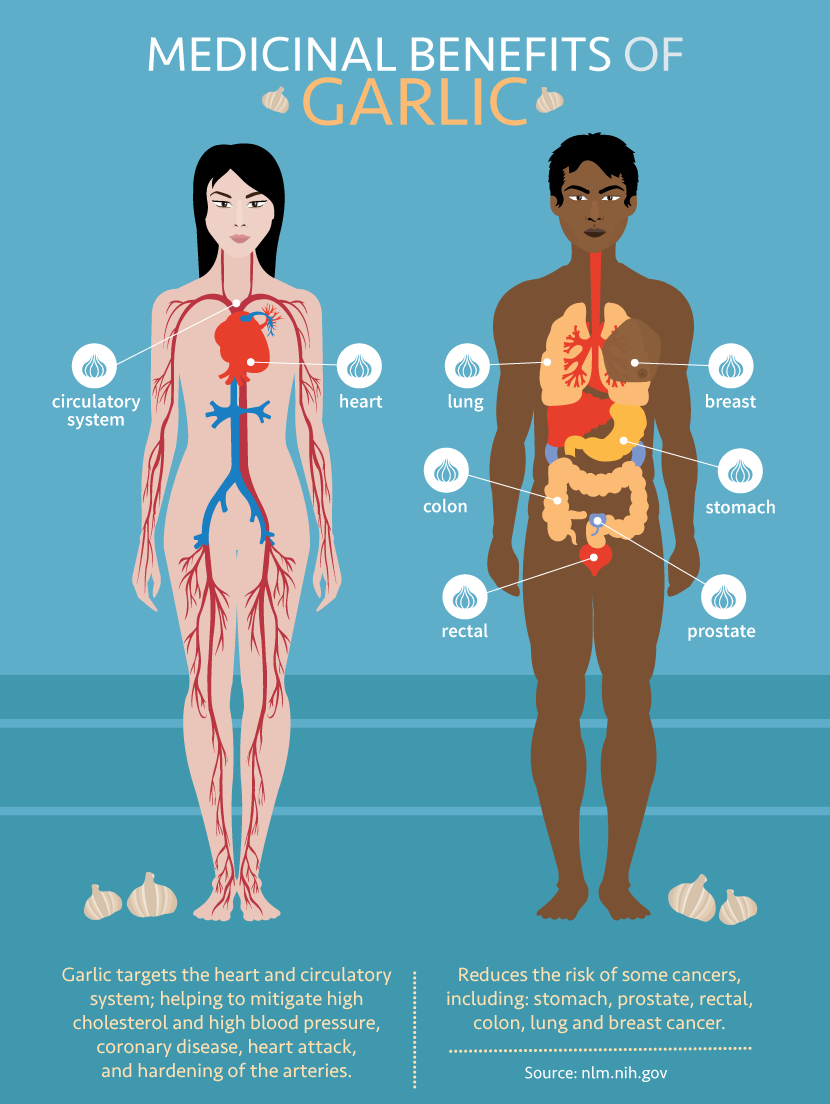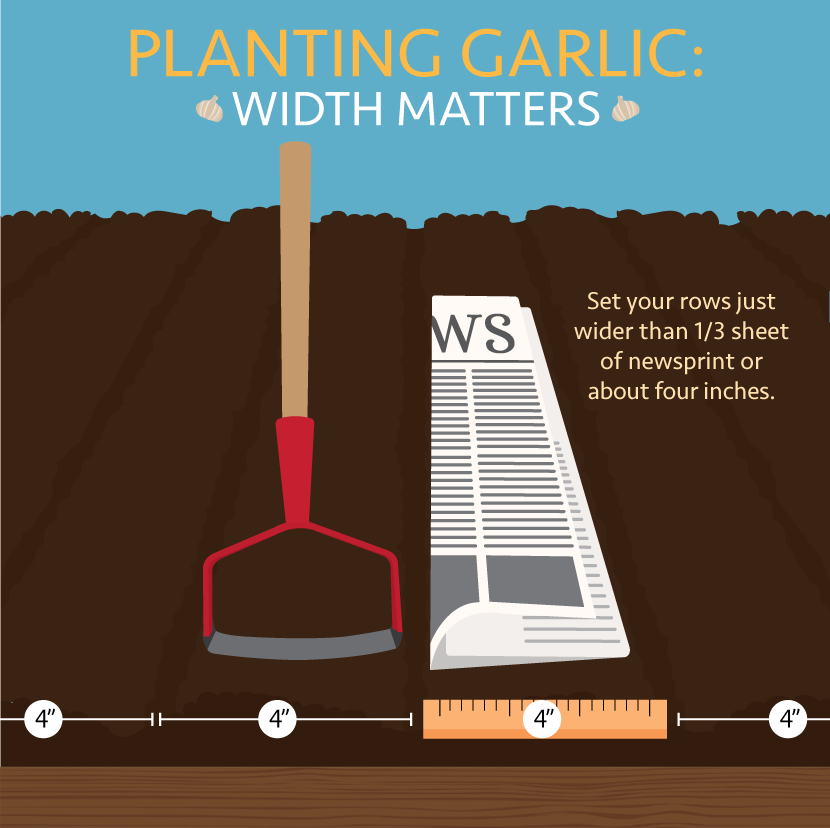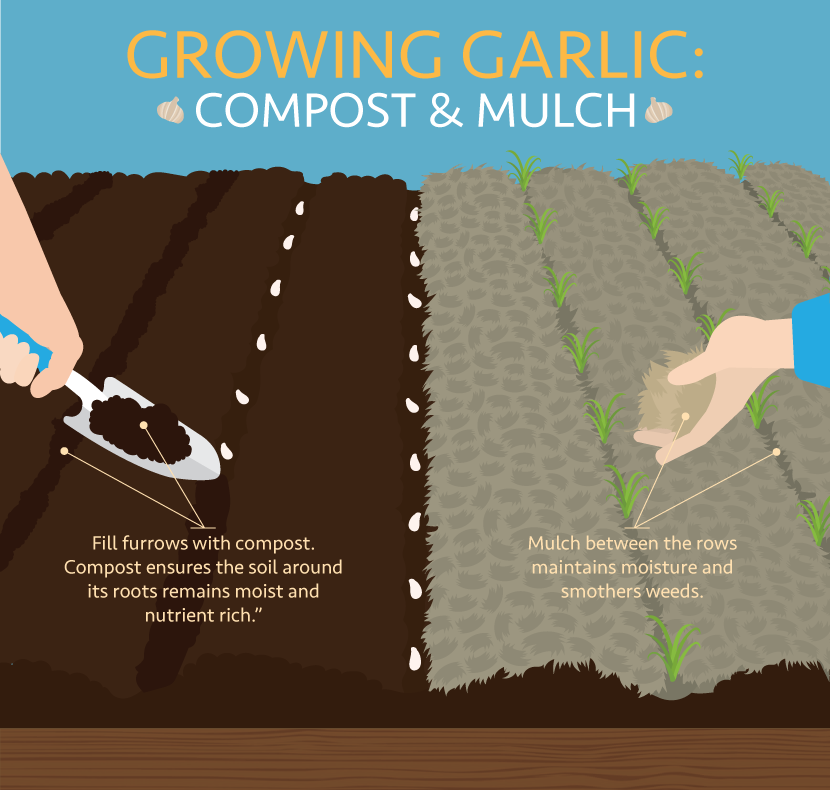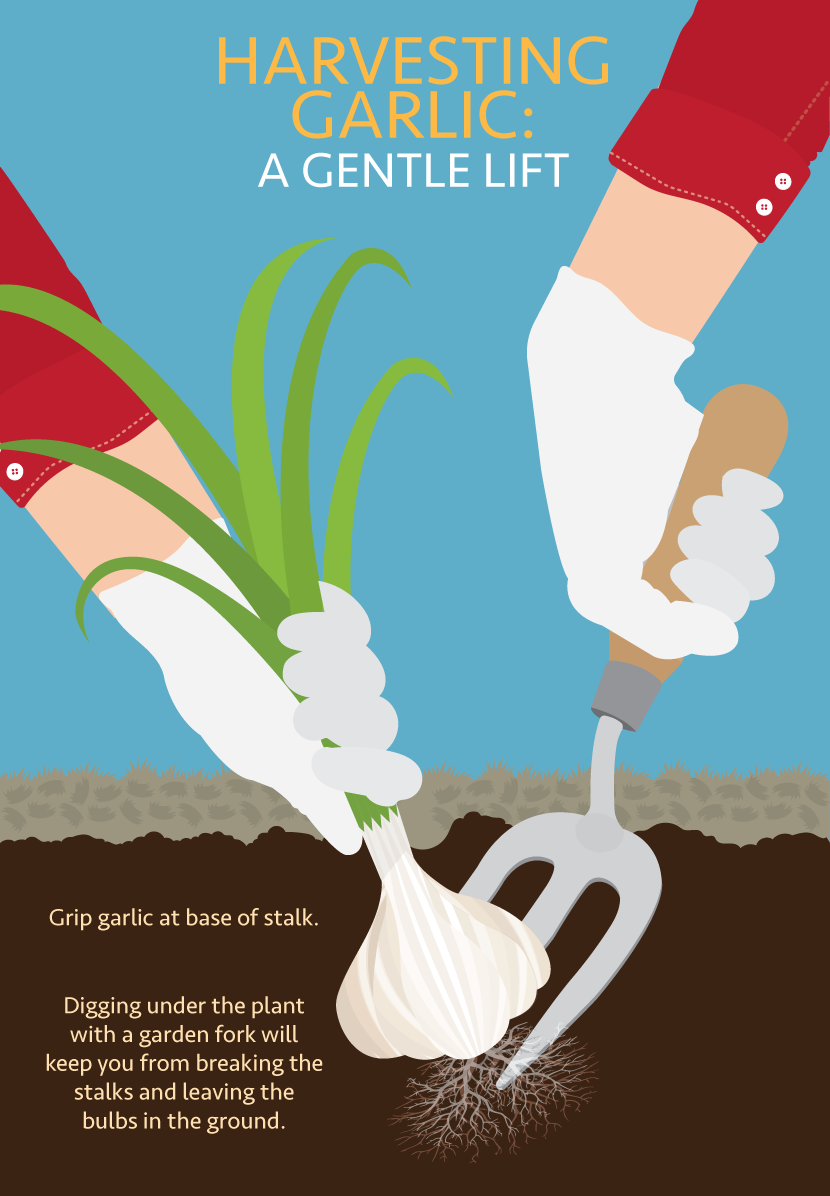Growing Garlic
The Superfood Seasoning
Native to Central Asia, garlic (Allium sativum) has conquered the world. It’s been a staple seasoning in Asian, African, and European cuisine for centuries, and is now used as an ingredient throughout the Americas as well. Is there any better way to start a meal than with a hot pan of fresh garlic sizzling in olive oil?
Mmm-medicinal
Not only does garlic taste really good, but research suggests it may also serve as an additive to help prevent food poisoning. Other research appears to indicate that under laboratory conditions, fresh garlic can kill Salmonella enteritidis, E. coli, and antibiotic-resistant Staphylococcus aureus.
But that is only part of the story. Throughout the centuries, garlic has been used to promote health and treat a variety of conditions and diseases.
According to the U.S. National Library of Medicine (NLM), garlic targets the heart and circulatory system; it can help mitigate high cholesterol and high blood pressure, preventing coronary disease, heart attacks, and hardening of the arteries.
Additionally, the NLM reports that garlic can help reduce the risk of some cancers, including stomach, prostate, rectal, colon, lung, and breast cancer. It is also used to treat patients with bladder cancer and prostate cancer.http://www.nlm.nih.gov/medlineplus/druginfo/natural/300.html

Other non-culinary applications of garlic have included preventing tick bites and fungal and bacterial infections, and building the immune system. It has also been used in the treatment of coughs, headaches, gout, sinus congestion, warts, corns, hemorrhoids, asthma, bronchitis, cold, flu, pre-eclampsia, hay fever, diabetes, athlete’s foot, ringworm, jock itch, osteoarthritis, enlarged prostate, and traveler’s diarrhea.
Homegrown Garlic Is Superior
China produces over 80% of the world’s garlic and has flooded markets with what is, in my opinion, a low-quality product. The best garlic is local, and the very best garlic is homegrown.
I have been growing and selling organic garlic for over a decade. During that time I’ve developed what I believe is the best, easiest way to grow amazing garlic. It comes down to a handful of key factors: (i) planning and preparing; (ii) ample high-quality compost; (iii) weeding and mulching; and (iv) timing, harvesting and storage.
Planning and Preparing
Garlic will grow in any garden bed, but like all vegetable plants, it prefers friable, uncompacted soils with plenty of organic matter. The first step to planning and preparing to plant garlic involves setting aside space in your garden for six to ten months.
In mild climates, garlic is usually planted on the shortest day of the year and harvested on the longest day of the year. In cold climates with winter snow cover, garlic is planted in mid to late autumn and harvested in late summer.
The next step is laying out the beds. Doing this mindfully is critical as it will impact on the ultimate size and vitality of your bulbs. I plan my rows to be just wider than two key management tools: a stirrup hoe and a sheet of newspaper. (If you do not have a stirrup hoe, a torpedo hoe or Dutch hoe will do.)

As seen in Figure 2, a tabloid size page of newsprint folded in thirds is the same width as a stirrup hoe. This proves important later when we get to weeding and mulching.
Compost
Garlic, along with other alliums, such as onions and leeks, thrives in moist soils. Compost helps retain soil moisture around the roots of the garlic as well as providing nutrients. If you intend to grow organically, a balanced mature compost is essential. I use a hot composting method popularly known as the “Berkeley Method.”
Making compost by the cubic meter means that you’re not likely to skimp on its use. For the best organic garlic, apply compost liberally while planting. Using a traditional hoe, pull a furrow through the soil as deep as you comfortably can or about two inches. Fill the trench with compost and plant cloves spaced at three to four inches apart.
Weeding and Mulching
Like any common garden vegetable, garlic does not like weed competition. Weeds rob nutrients and water, and if left too long will shade the garlic leaves. Like any common gardener, I do not like weeding, so I’ve developed the best and laziest way to manage my crop.
From the initial sprouting until the garlic is about six inches tall, the best way to manage weeds in between the rows is with a stirrup (or torpedo hoe or Dutch hoe). Once every week or two on a sunny and windy day, lightly skim the tiny weeds from the soil surface. This is the same weed management technique described in our article on easy crop rotation for your garden. You’ll need to do this for six to eight weeks.
Thereafter, the easiest way to control weeds is by mulching with newspaper and straw or hay. Fold your tabloid size newsprint in thirds and lay it end-to-end between the rows overlapping two to three inches.

Mulch provides the added benefits of reducing soil evaporation and brings worms higher in the soil to do the wonderful tilling and fertilizing that they do.
Once the mulch is down, the garlic bed is essentially no-maintenance until harvest time. Of course, a few weeds will grow immediately alongside your plants and in the case of an extreme drought some additional watering may be required.
Timing, Harvesting, and Storage
As described above, timing may be different for different climates around the world. Additionally, timing may differ depending on whether you are planting hard neck or soft neck garlic. It is best to check with your local supplier of seed garlic as to the best timing for you.
Depending on variable local weather conditions from year to year, harvesting may be pushed up or back a week. There is no problem with taking a garden fork out and lifting one bulb to check. Digging garlic too early only means the bulbs will not be as big as they may have been, but digging too late may mean that the outer skin has split. In most cases, this will shorten the storage life.

I have found the quickest way to harvest is to use a garden fork in one hand and to grab the tops of two or three plants in the other. Gently lever up the bulbs from below while lifting and jiggling the stems. Brush off residual soil attached to the roots, lay the plants down and repeat.
For best storage results, hang your garlic for two to four weeks in a cool, dry place with plenty of air circulation. After this time, cut off the stems, leaves, and roots. Further storage is best in a cool, dry place out of direct sunlight. Wire racks are brilliant, but do not stack bulbs more than two high.
Embed the article on your site

